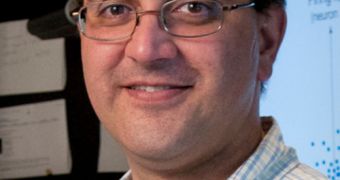For a long time, scientists have been interested in determining how the human brain goes about ordering the body to move. Understanding this is essential for explaining why some people at times react faster to a situation than their peers.
Planning movement is an essential process the human brain is capable of, but also one that has been relatively little understood thus far. Researchers at the Stanford University have just concluded a new study that focuses on this exact issue.
The investigators were especially interested to how the brain plans movements in response to a “go” signal, such as for example the one athletes need to perceive in order to start a race. Case in point, the team analyzed a 1991 race between Carl Lewis and Leroy Burrell.
The former had been champion three years in a row, but the latter defeated his record on June 14, 2011 by a margin of just three-hundredths of a second. This is about the time it takes a shutter to capture a single frame of video.
Electrical engineers Krishna Shenoy and Maneesh Sahani led the Stanford School of Engineering team whose goal was to determine precisely what happened that day. Details of their work have just been published in the latest issue of the top scientific journal Neuron.
The research group also included graduate students Afsheen Afshar, Gopal Santhanam and Byron Yu, as well as postdoctoral researcher Stephen Ryu. Their investigation was only made possible through the advent of new measurement technologies.
The methods enable the tracking of to hundreds of individual neurons at the same time. The team used this ability to study the neurological processes behind the planning and execution of motion.
“This research holds great promise in many areas of neuroscience, in particular human prostheses that can be controlled by the brain,” Shenoy explains. He adds that Lewis lost the 1991 race because he was slower off the blocks, not because he was slower while running.
Burrell beat Lewis off the blocks by five one-hundredths of a second, which proved enough to guarantee his victory. “Lewis may well have lost because he wasn't able to optimize his own motor plan and thus his reaction time was slow,” Shenoy says.
“Thanks to new tools, for the first time we are able to understand what the neurons are telling us. We can hypothesize about how the activity of a group of neurons gives rise to movement,” the expert adds.
In a series of experiments, the researchers implanted electrodes in the brains of monkeys trained to touch an object on cue. The dorsal pre-motor cortical region was the man target of the study.
“We get our brains into a sort of ideal zone – an 'optimal space' – of neural activity. The planned movement is possible from anywhere within this space, but some points – those closer to the intended target along the ideal neural pathway – are more advantageous than others in terms of the reaction time,” Shenoy concludes.

 14 DAY TRIAL //
14 DAY TRIAL //